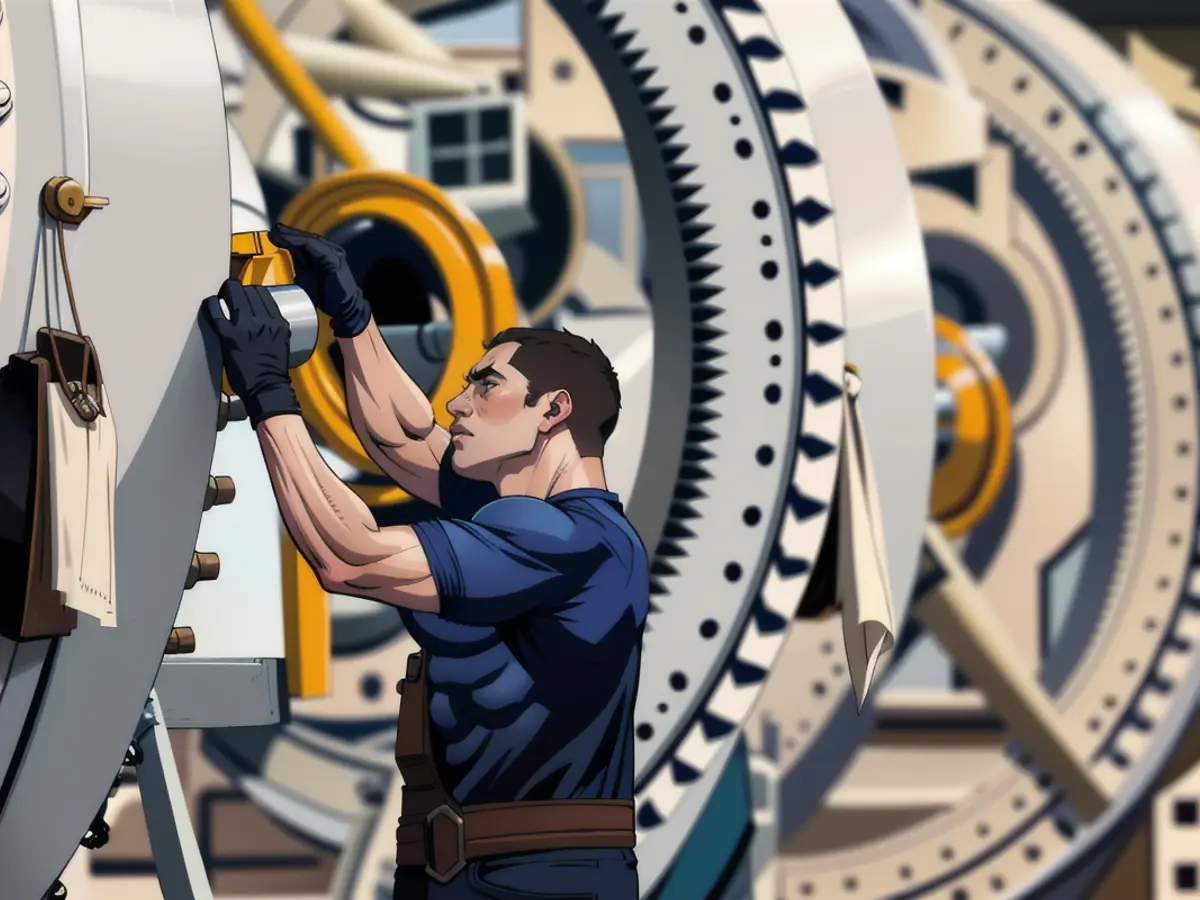Trade Association or Business Chamber [added] - Rising labor shortages are resulting in significant financial losses.
The Bavarian Chamber of Industry and Commerce issues a warning about the impending worsening of the labor shortage. According to a recent study commissioned by the BIHK and conducted by the IW Cologne, the so-called "labor gap" is predicted to expand by 17% (an additional sixth) between 2024 and 2027. This gap currently stands at approximately 151,000 and represents the number of job openings that remain when the pool of suitably qualified jobless individuals is subtracted. The study's estimates suggest that the gap will reach 176,000 by 2027, considering high levels of foreign labor influx and an increase in labor market participation.
Manfred Gößl, the BIHK's managing director, declared: "The annual monetary loss caused by the lack of productivity in Bavaria is already 17 billion euros. Companies in severely impacted sectors may face an existential crisis, or at the very least, need to make drastic service adjustments." This warning translates to more restaurant closures, extended service hours on buses and trains, longer waiting times for skilled tradesmen and workshops, longer waits at doctors' offices and clinics, and a deepening care shortage for children and the elderly.
Gößl calls for the exploration of all employment opportunities. "This involves providing more assistance to the unemployed in terms of employment and vocational training, as well as raising the employment rates of the elderly and women through tax incentives and adapting the retirement age to increasing life expectancy." Foreign labor is anticipated to play a more significant role, with an estimated 23% share of the workforce by 2027. In 2017, this figure stood at 14%.
The shortage of skilled labor is most acute among the "skilled worker" qualification level, the second-highest of four. The study forecasts a gap of just under 100,000 in 2027 for this group. The "specialist" level (including those with master's or bachelor's degrees) is expected to have a gap of 29,000 by 2027, while the "expert" level (consisting of management positions) will see a 39,000 gap. Even the "helper" level, the bottom rung, has had a shortage for years and is projected to continue growing by 2027.
The study predicts the largest labor gaps for skilled workers in sales in 2027 at around 8,400, specialists in childcare and education at around 4,800, skilled workers in healthcare and nursing at around 4,500, and information technology experts at around 3,900. These numbers indicate that information technology professionals make up 40% of their workforce, specialists in childcare and education account for 21%, and skilled workers in sales account for 6%.
The study also forecasts an increase in the value creation losses as a result of the widening labor gap: by 2027, these losses should reach approximately 18.3 billion euros per year, equating to 2.8% of Bavaria's total gross value added. The regions hardest hit are Upper Franconia with around 6.4% and Würzburg-Schweinfurt with 5.6%, while Munich and Upper Bavaria suffer a comparatively smaller impact at 1.6%.
Read also:
- The German Chamber of Commerce and Industry in Bavaria (BIHK) and the IW Cologne have jointly released a report predicting a 17% increase in the labor shortage by 2027, which currently stands at 151,000 vacancies.
- Manfred Gößl, BIHK's managing director, emphasizes the financial consequences of this labor shortage, estimating annual losses of 17 billion euros due to reduced productivity in Bavaria.
- Gößl suggests various strategies to address this issue, including increasing employment and vocational training programs, providing tax incentives for the elderly and women to increase their labor market participation, and increasing the role of foreign labor in the workforce.
- The labor gap is particularly significant among the skilled worker qualification level, where the study forecasts a deficit of nearly 100,000 workers by 2027.
- The predicted labor gaps will result in significant value creation losses, with the study estimating a yearly increase of approximately 18.3 billion euros by 2027, impacting regions such as Upper Franconia and Würzburg-Schweinfurt more than others.








